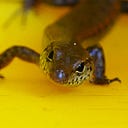Member-only story
Bounders, Scoundrels, and Grevilleas
The fertiliser hit the fan in 19th Century horticulture
In the deserts of western Queensland, the scarlet flowers of Wickham’s Grevillea (Grevillea wickhamii) stand out against the canvas of yellow sand and grey-green spinifex. If you look under the butterflies that have arrived to feed on nectar and examine the flowers, you will see that the freshest ones take the shape of a tube with a long curved style peeling away from one side. The flowers of Wickham’s Grevillea are lined up next to each other to form sprays. In other species, the flowers spread out from a single point, like the legs of a rather graceful spider — or, as I prefer to think of them — like fireworks in the sky.
Wickham’s Grevillea is one of more than 370 species of Grevillea. Almost all of them are restricted to Australia, with only a handful known from Sulawesi, New Guinea, and New Caledonia. No Australian native garden is complete unless it includes at least one Grevillea.
The genus was named in honour of Charles Francis Greville (1749–1809), politician, entrepreneur, and one of the founders of what is now the Royal Horticultural Society. Greville built a house at Paddington Green on the outskirts of London where he grew tropical plants in elaborate conservatories. His mistress Emma Hart (born Amy Lyon) and her ailing mother lived nearby. When they became…
